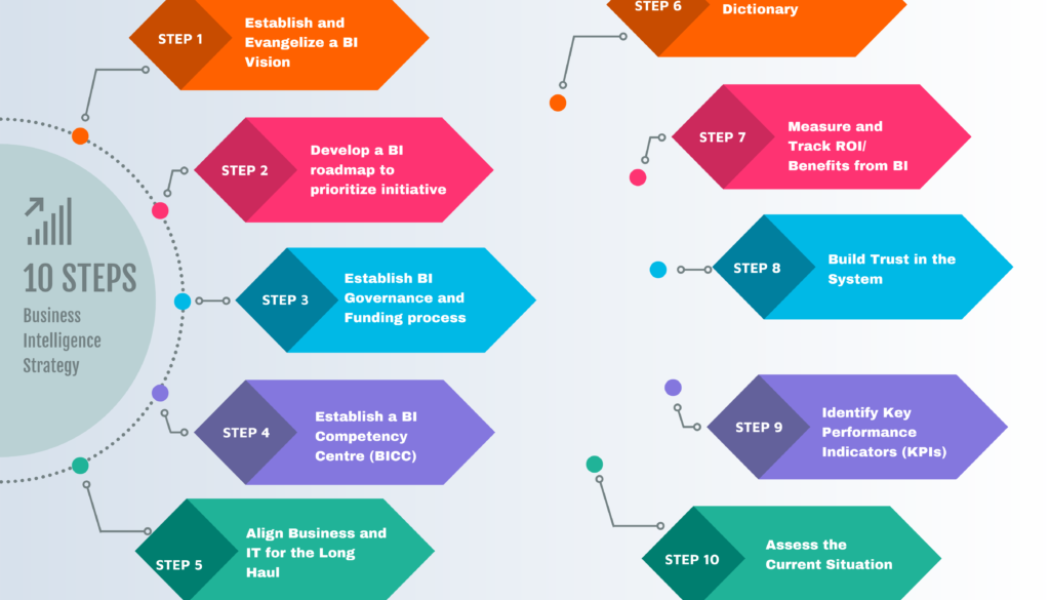With digital transformation picking up faster than ever before in the business landscape, most organisations today employ a mix of business tools to run their operations across sales, marketing, finance, HR, etc. More often than not, all of these tools include a reporting module that displays department-specific data records and statements. However, stand-alone data like sales figures, lead numbers, email open rates, and the like, can only tell you so much about customer behaviour.
As businesses continue to go digital and become increasingly data-driven, it’s imperative for them to include a holistic business intelligence (BI) programme in their technology strategy. A comprehensive BI programme helps combine various data points from multiple sources, perform cross-functional analysis, and bring out intuitive insights like inspirations behind seasonal customer trends, reasons for supply-chain gaps, sales funnel pain points gathered from customer feedback, productivity drops due to employee attrition, future trend predictions, and whatnot. Powerful information like this can enable organisations to adopt a culture of smart, evidence-based decision-making and gain a true competitive edge.
Getting started with a business analytics and intelligence program
Provided that your organisation has the necessary funding and resources to implement a central BI programme, the first natural step is to identify the key business metrics you want to compute and track.
As pointed out here, once you have identified the goals, the next step is defining a data strategy. You need to go about defining your data strategy for key focus areas and then identify and align its data sources with that strategy. From there, it should be relatively simple for the organisation to build a data pipeline and prepare the data for analysis.
Building a robust, unified data pipeline from disparate sources
Prepping the data pipeline is one of the biggest challenges organisations face while implementing their BI programme. Using a mixed toolset offered by different vendors translates to disparate data sets that need to first be integrated, blended, and unified to enable a(n) smoother as well as accurate analysis procedure. In fact, it’s been noted that 80% of analysis time is spent on data preparation as poor quality data often results in untrustworthy business insights.
This is where BI tools that include data preparation provisions come in handy. Be it a custom-built BI program or a bespoke tool, it’s important that your option incorporates data-prepping and blending capabilities, i.e., ability to connect to different sources (legacy or cloud app) and port data in different formats, clean and remove duplicates, blend the data into a single data warehouse, and improve the overall data quality. This helps ensure robust, error-free data pipelines, in turn assuring reliable business intel.
Updating your privacy practices and official policy
With a BI programme, your obligation as a company to protect customer data becomes greater. Some privacy practices to keep in mind include, (1) masking critical user data, i.e., removing personally identifiable information from all data sets using anonymization methods, before feeding them into the BI data pipeline, (2) collecting explicit consent from the data subjects (customers and employees) to use their anonymized data for BI analysis, (3) ensuring that your data sources are also subject to stringent privacy standards, and finally, (4) updating your organisation’s customer privacy policy straight away to include required details about your BI programme.
Integrating your BI program with internal collaboration platforms
Despite setting up a cost-intensive, comprehensive BI programme, many organisations struggle to drive adoption among their teams and prompt necessary action or decision-making. One way to solve this is to integrate the BI system widely and deeply across internal communication and collaboration platforms used by employees such as email, chat, intranet forums, project management avenues, etc. The BI dashboards must allow executives to blend and visually analyse data for cross-functional insights, fashion the insights into easily understandable and interactive reports, decide the next course of action, and subsequently share the information with the teams or individuals concerned in real time.
Staying future-ready – leave room for innovation
As you implement modern technologies and boost your operational efficiencies, running a future-ready business also includes being constantly on the lookout for innovation, and ensuring that the business systems and processes are elastic enough to absorb the change. Similarly, your BI programme should have enough legroom to experiment and capitalise on emerging opportunities like AI-powered voice analytics and RPA/business analytics integration. For instance, current AI trends have made it possible for users to hold conversations with AI assistants to generate automated BI insights with a single click, predict future trends, conduct as well as visualise cognitive and what-if analyses, and much more.
If the events of the past two years have taught us anything, it’s that things can change incredibly quickly and it’s vital to be flexible. Cloud-based BI tools enable business owners to look at real-time data from across departments. to make quick decisions. This helps businesses stay nimble during unprecedented times.










Tagged: Analytics, Artificial Intelligence, Digital Transformation, Top Stories, Zoho